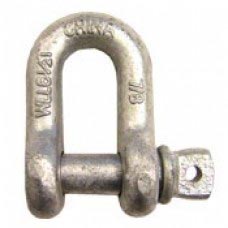 As a safety manager, rigging operator, or personnel involved in lifting operations, your role is crucial in ensuring safety. This requires a deep understanding of rigging supplies, especially eyebolts and wire ropes. Your proper usage, inspection, and maintenance of these components are vital in preventing accidents and ensuring operational efficiency. Adhering to best practices for using eyebolts in rigging operations is essential for ensuring safety during lifting situations, as implementing mandatory safety measures can prevent accidents and protect both workers and equipment.
As a safety manager, rigging operator, or personnel involved in lifting operations, your role is crucial in ensuring safety. This requires a deep understanding of rigging supplies, especially eyebolts and wire ropes. Your proper usage, inspection, and maintenance of these components are vital in preventing accidents and ensuring operational efficiency. Adhering to best practices for using eyebolts in rigging operations is essential for ensuring safety during lifting situations, as implementing mandatory safety measures can prevent accidents and protect both workers and equipment.
What Are the Safety Requirements for Eyebolts?
Eyebolts are integral to rigging operations and must be handled with care. According to DOE’s Hoisting and Rigging Standard (DOE-STD-1090-99), eyebolts must be fabricated from forged carbon or alloy steel. They should carry clear markings of the manufacturer’s name and identification, and for alloy steel eyebolts, the symbol "A" should be used to denote their material. To ensure their safety, eyebolts must have a minimum design factor of 5:1, with the vertical safe working load forged or stamped into each eyebolt. Proper marking and strict adherence to these standards provide a foundation for safe lifting operations.
How to Correctly Install Eyebolts for Rigging?
Incorrect installation of eyebolts is a common cause of rigging accidents. Follow these steps to ensure proper installation:
- Check Alignment: Eyebolts should be fully seated and aligned with the load direction to prevent side loading, which can cause the eyebolt to fail.
- Use Proper Washers: When using eyebolts on softer materials like wood, always use washers to prevent the eyebolt from pulling through the surface.
- Tightening: Secure eyebolts firmly, but avoid over-tightening, as this can weaken the material around the bolt.
*Always ensure eyebolts are free from damage or excessive wear before use.
Why is Pre-Lift Planning Essential?
Pre-lift planning is crucial to avoid lifting hazards. The DOE standards emphasize detailed planning, including identifying load weights, selecting appropriate rigging supplies, and conducting a pre-lift meeting to review procedures and resolve questions. A responsible manager should review and approve the procedure and rigging sketches before proceeding with the lift.
How to Inspect Eyebolts and Wire Ropes for Safe Lifting?
Regular inspections of eyebolts and wire ropes are vital to maintaining safety standards:
- Check for Wear: Inspect eyebolts for wear, deformation, cracks, or corrosion.
- Verify Load Capacity: Ensure the load capacity markings are legible and accurate. Eyebolts should only be used within their rated capacity.
- Wire Rope Maintenance: Store wire ropes properly to prevent damage or deterioration, avoiding dragging ropes over abrasive surfaces.
- Frequent Inspections: Conduct monthly inspections under normal service conditions and weekly to monthly under heavy service conditions.
What are the Consequences of Neglecting Safety Standards?
Ignoring safety standards can result in accidents, injuries, or equipment damage. Lifting operations may fail if they do not adhere to the required inspections, installation, and use guidelines, leading to significant consequences.
Prioritize Safety with Rigging Supplies and Wire Ropes
Safe lifting operations using rigging supplies like eyebolts and wire ropes require meticulous planning, proper installation, regular inspections, and strict adherence to safety standards. Following DOE-STD-1090-99 guidelines ensures compliance and the protection of personnel and equipment. Always keep safety at the forefront of every lift operation.
Related Reading